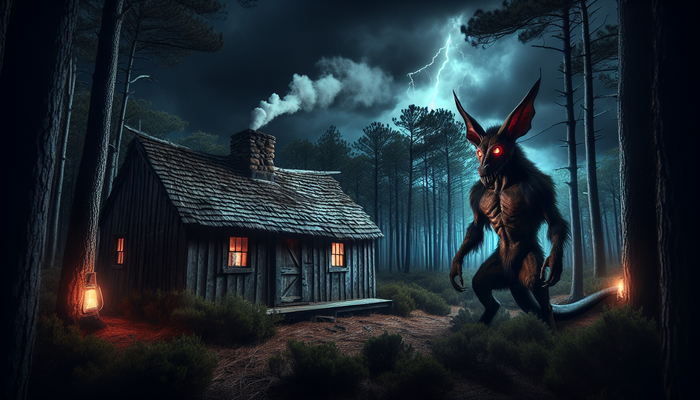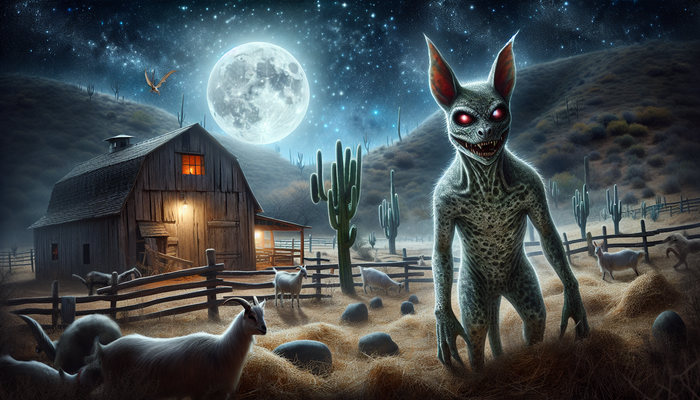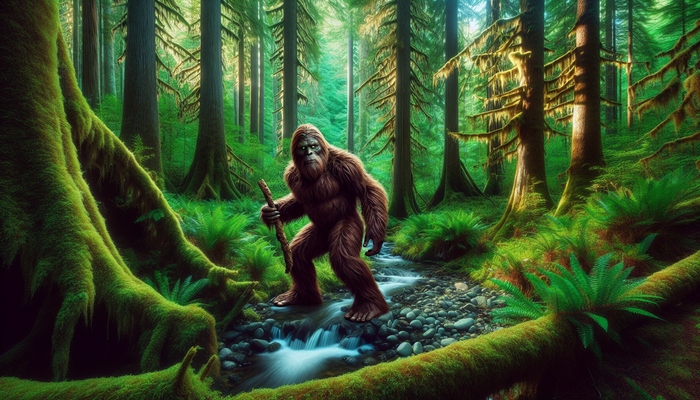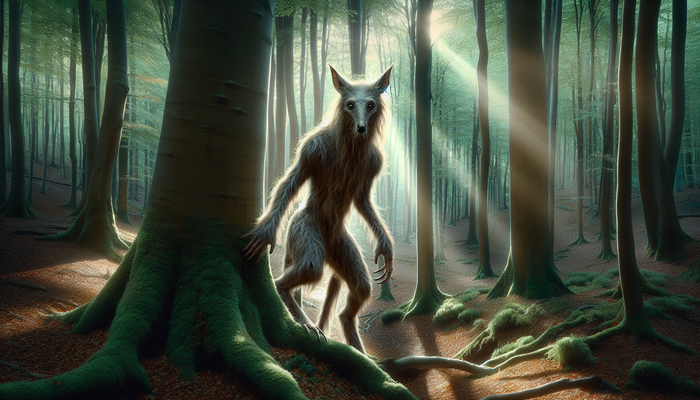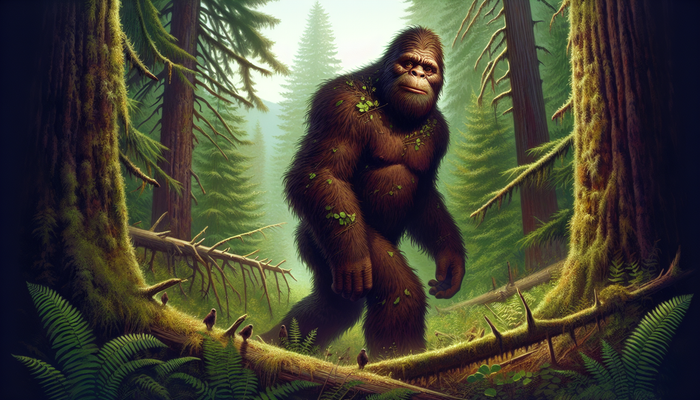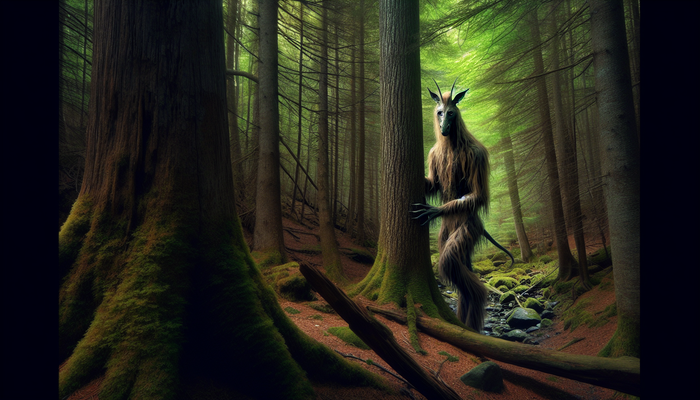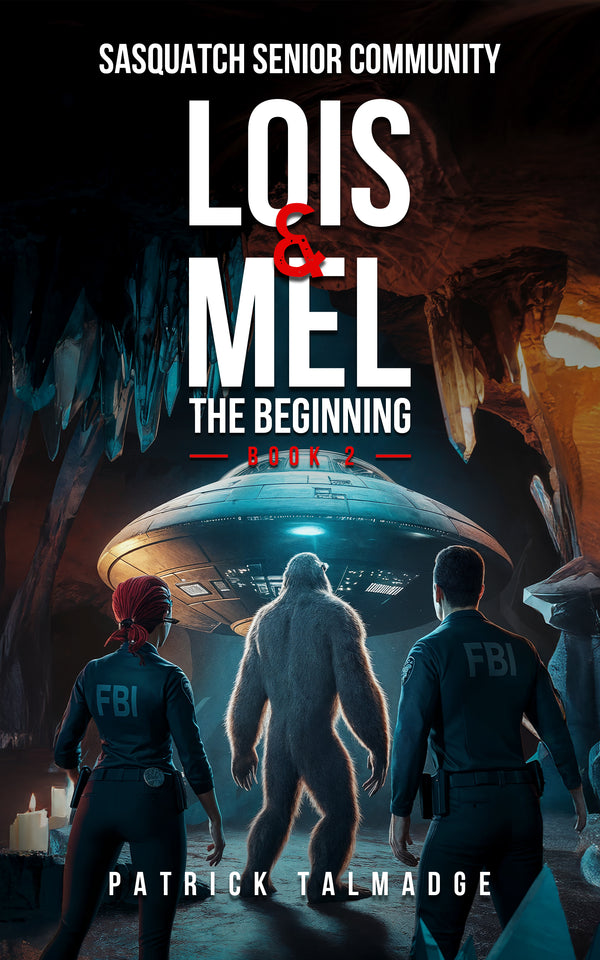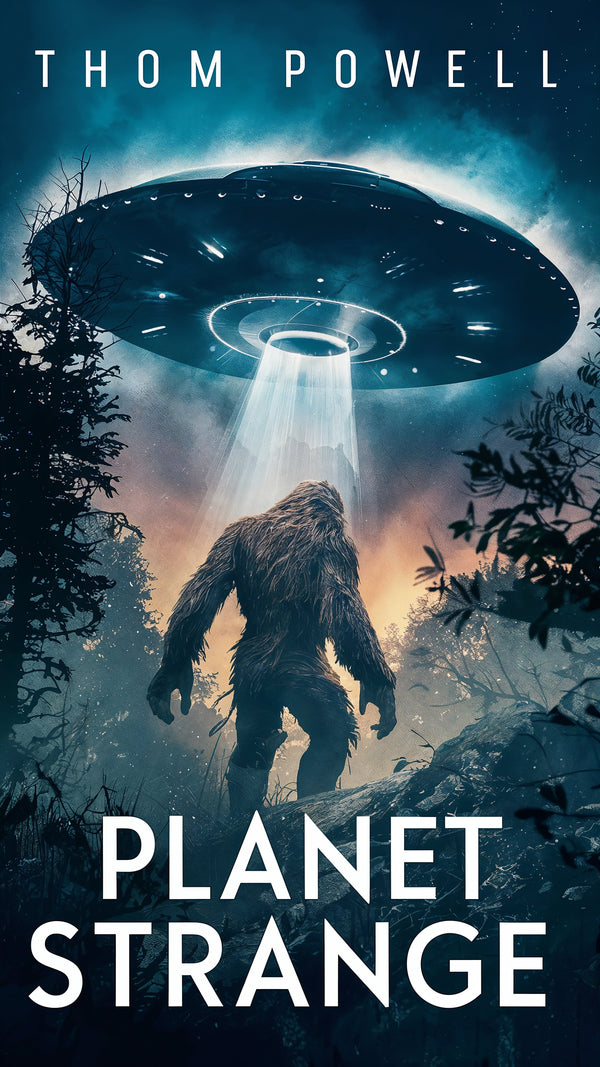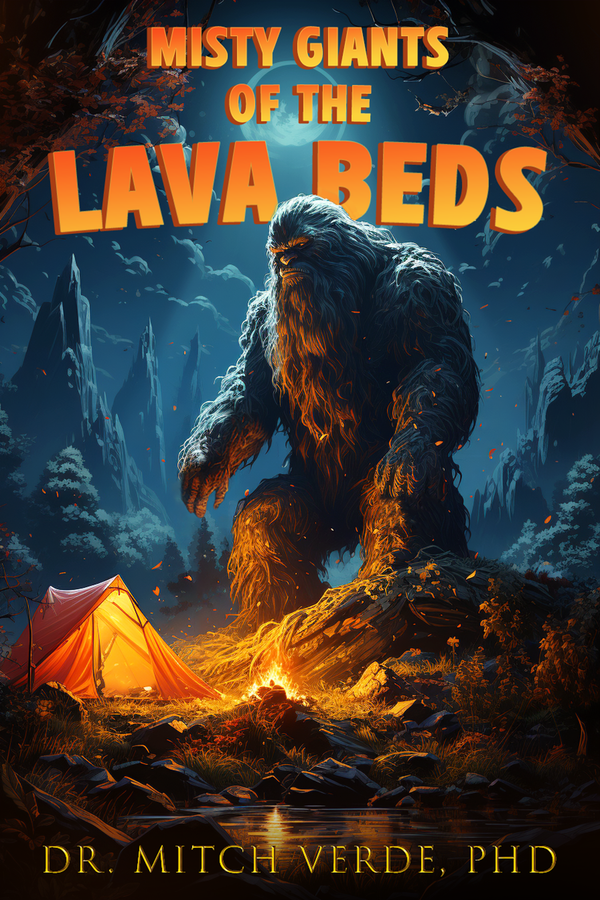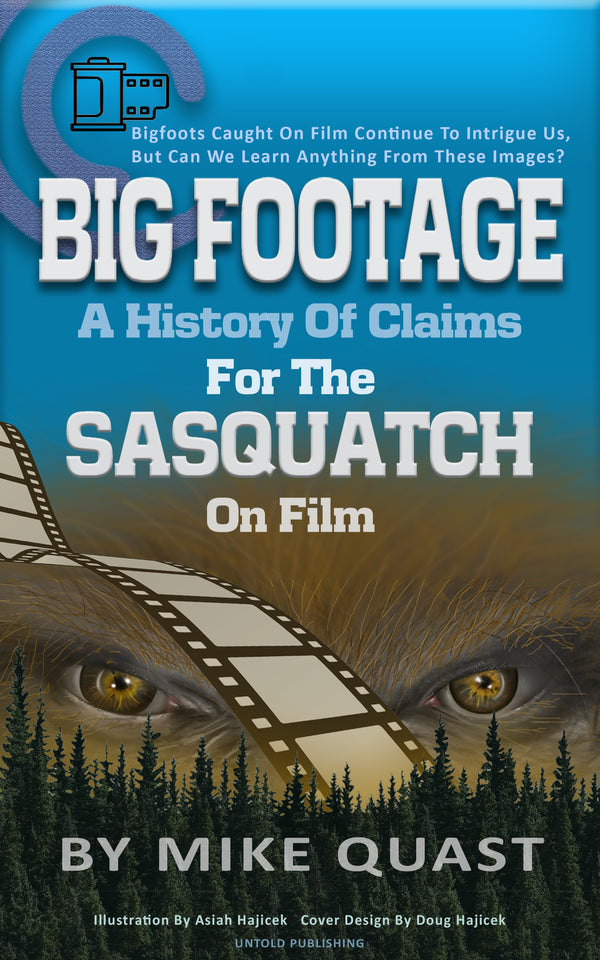Exploring Extinct Creatures and Their Cryptid Counterparts

By Anthony Romano, Cryptozoologist
In the shadowy realm where science meets folklore, a fascinating phenomenon emerges: the connection between extinct creatures and the cryptids that capture our imagination today. This intersection of paleontology and cryptozoology offers a unique lens through which we can examine how ancient memories shape modern myths, and how the ghosts of long-gone species continue to haunt our collective consciousness.
Cryptids, those elusive creatures whose existence remains unproven by science, often bear striking resemblances to animals that once roamed the Earth. From the towering Burrunjor of Aboriginal lore to the mysterious Mokele-Mbembe of the Congo Basin, these legendary beasts seem to echo the forms of extinct giants that once dominated our planet's ecosystems. But are these similarities mere coincidence, or do they reveal a deeper connection between our past and the stories we tell?
Understanding Cryptozoology
To understand this connection, we must first grasp the concept of cryptozoology - the study of animals whose existence is unsubstantiated. This field, often dismissed by mainstream science, has nonetheless captured the public imagination and spawned countless expeditions in search of creatures like Bigfoot, the Loch Ness Monster, and the Chupacabra. While many view cryptozoology with skepticism, its proponents argue that it serves a valuable purpose in pushing the boundaries of our understanding of the natural world.
The Role of Extinct Creatures in Cryptid Legends
The significance of extinct creatures in shaping cryptid legends cannot be overstated. Take, for example, the concept of Lazarus taxa - species thought to be extinct but later rediscovered alive. The coelacanth, a prehistoric fish believed to have died out 66 million years ago, was famously rediscovered in 1938 off the coast of South Africa. This remarkable find not only shocked the scientific community but also lent credence to the idea that other "extinct" creatures might still lurk in unexplored corners of our planet.
Cultural Memory and Cryptid Stories
The role of cultural memory in the persistence of cryptid stories is equally important. As generations pass, the details of encounters with now-extinct animals may become distorted, evolving into legends that bear only a passing resemblance to the original creatures. These stories, passed down through oral traditions and eventually recorded in folklore, serve as a kind of time capsule, preserving fragments of our ancestors' experiences with long-vanished species.
The Burrunjor and Diprotodon Connection
One of the most compelling examples of this phenomenon is the connection between the Burrunjor and the Diprotodon. The Burrunjor, a creature from Aboriginal mythology in Australia, is often described as a large, dinosaur-like beast. This description bears a striking resemblance to the Diprotodon, the largest known marsupial to have ever existed.
The Diprotodon, which lived during the Pleistocene epoch, could reach sizes comparable to a modern rhinoceros. Its massive bones, when discovered by Aboriginal people, could easily have been mistaken for the remains of a creature that had only recently died. This misinterpretation, combined with the oral traditions that preserved the memory of these giant beasts, likely contributed to the development of the Burrunjor legend.
Fossil Evidence and Folklore
The story of the Burrunjor highlights an important aspect of the relationship between extinct creatures and cryptids: the role of fossil evidence in shaping folklore. Without a scientific understanding of extinction and evolution, ancient peoples would have had no reason to believe that the bones they found belonged to animals that no longer walked the Earth. Instead, they incorporated these discoveries into their existing worldviews, creating stories of giant beasts that still lurked in the wilderness.
The Mokele-Mbembe and Sauropod Dinosaurs
Moving from the arid landscapes of Australia to the lush jungles of Central Africa, we encounter another fascinating cryptid with potential ties to extinct species: the Mokele-Mbembe. This legendary creature, said to inhabit the Congo River Basin, is often described as resembling a sauropod dinosaur, with a long neck, small head, and massive body.
The connection between Mokele-Mbembe and sauropods is particularly intriguing when we consider the fossil record of dinosaurs in Africa. While sauropod fossils have been found on the continent, none date to the recent past - the last dinosaurs went extinct about 66 million years ago. So why do stories of sauropod-like creatures persist in African folklore?
Theories Behind the Mokele-Mbembe Legend
- Cultural memories of ancient elephant or rhinoceros species
- Misidentification of modern animals in unusual circumstances
- Inspiration from dinosaur fossils discovered by local people
Regardless of its origins, the Mokele-Mbembe legend has captured the imagination of cryptozoologists and adventure seekers for decades. Numerous expeditions have ventured into the Congo Basin in search of evidence for the creature's existence, though none have produced conclusive proof. The persistence of this legend speaks to the enduring power of cryptid stories and their ability to inspire exploration and scientific inquiry.
The Emela-Ntouka and Ceratopsian Dinosaurs
Another intriguing cryptid with potential ties to extinct species is the Emela-Ntouka, also reported from the Congo region. This creature is often described as having a large body, a horned head, and a preference for aquatic habitats. Some cryptozoologists have drawn parallels between the Emela-Ntouka and ceratopsian dinosaurs like Triceratops.
The idea that a ceratopsian-like creature could have survived to the present day is, of course, highly improbable from a scientific standpoint. However, the persistence of the Emela-Ntouka legend raises interesting questions about how ancient life forms might influence modern folklore. Could stories of the Emela-Ntouka be based on fossilized remains of horned dinosaurs discovered by local people? Or might they be exaggerated accounts of encounters with modern horned animals like rhinoceroses?
The Thylacine: From Extinction to Cryptid
While the creatures we've discussed so far have their roots in the distant past, some cryptids are based on animals that went extinct much more recently. The Thylacine, or Tasmanian Tiger, is a prime example of how a recently extinct species can quickly enter the realm of cryptozoology.
The last known Thylacine died in captivity in 1936, but reports of sightings have continued to this day. These alleged encounters have given rise to a cryptid known as the "Tasmanian Tiger," which is often described as a large, striped, dog-like creature with a stiff tail and unusual gait.
Factors Contributing to Thylacine Sightings
- Well-documented appearance and behavior
- Remote wilderness areas providing potential habitat
- Cultural significance and national pride
The case of the Thylacine illustrates how cryptids can serve as a bridge between scientific knowledge and cultural memory. While the animal is officially classified as extinct, its status as a cryptid keeps its memory alive in the public consciousness, potentially inspiring greater interest in conservation and the protection of endangered species.
Woolly Mammoths and Modern Myths
From the relatively recent past, we now turn to one of the most iconic extinct creatures of all time: the Woolly Mammoth. These massive, fur-covered elephants roamed the northern parts of North America and Eurasia during the last Ice Age, going extinct around 4,000 years ago. Despite their long absence from the Earth, mammoths have left an indelible mark on human culture and continue to inspire cryptid legends to this day.
In some Native American folklore, stories of giant, hairy creatures resembling mammoths have been passed down through generations. These tales often describe beasts with long tusks and shaggy coats, echoing the appearance of woolly mammoths known from fossil evidence and frozen specimens.
Factors Contributing to Mammoth-Like Cryptid Legends
- Discovery of mammoth bones and tusks by indigenous peoples
- Long period of coexistence between humans and mammoths
- Speculation about "relic populations" in remote areas
The mammoth's influence on cryptid legends extends beyond direct representations of the animal itself. Some researchers have suggested that memories of mammoths might have contributed to the development of other cryptid stories, such as tales of giant, fur-covered humanoids like Bigfoot or the Yeti. While this connection is speculative, it highlights the complex ways in which extinct creatures can shape our modern myths and legends.
Elasmotherium and Unicorn Myths
Another fascinating example of an extinct creature influencing cryptid lore is the case of the Elasmotherium and its potential connection to unicorn myths. Elasmotherium, often referred to as the "Siberian unicorn," was a large, rhinoceros-like creature that lived during the Pleistocene epoch. Its most distinctive feature was a single, massive horn on its forehead, which has led some researchers to speculate that it may have inspired early unicorn legends.
The earliest depictions of unicorns in Western culture often resemble the Elasmotherium more closely than the horse-like creatures we associate with unicorns today. These early unicorns were described as powerful, often aggressive animals with cloven hooves and a large horn - characteristics that align more closely with Elasmotherium than with horses.
The Evolution of Unicorn Myths
- Early depictions resembling Elasmotherium
- Marco Polo's accounts conflating real animals with mythical creatures
- Transformation into the horse-like unicorns of modern folklore
This connection between Elasmotherium and unicorns also highlights the importance of fossil evidence in shaping human understanding of the natural world. The discovery of Elasmotherium fossils in the 19th century provided a potential scientific explanation for unicorn myths, demonstrating how paleontology can shed light on the origins of even our most fantastical legends.
Giant Ground Sloths and the Mapinguari
Moving from the steppes of Siberia to the dense rainforests of South America, we encounter another intriguing pair of extinct creature and cryptid counterpart: the Giant Ground Sloth and the Mapinguari. The Giant Ground Sloth, a massive herbivore that roamed South America during the Pleistocene, has left a lasting impression on the folklore of the Amazon region.
The Mapinguari, a creature said to inhabit the Amazon rainforest, is often described as a large, hairy beast with a fearsome roar and a terrible odor. Some accounts even claim that the Mapinguari has a single eye and a mouth in its stomach. While these details might seem fantastical, certain aspects of the Mapinguari legend bear a striking resemblance to what we know about Giant Ground Sloths.
Similarities Between Giant Ground Sloths and the Mapinguari
- Enormous size
- Shaggy fur
- Powerful claws
- Unusual anatomy
The connection between the Mapinguari and the Giant Ground Sloth is particularly intriguing because some species of ground sloth may have survived until relatively recently in South America. Some paleontologists have suggested that humans might have encountered these animals as late as 5,000 years ago in some parts of the continent. This recent coexistence could explain the vivid and persistent nature of the Mapinguari legend.
Giant Beavers and Native American Legends
From the towering sloths of South America, we turn our attention to a smaller but no less intriguing extinct creature: the Giant Beaver (Castoroides). This prehistoric animal that dwarf its modern relatives, which lived in North America during the Pleistocene, has left its mark on Native American legends and continues to inspire cryptid stories to this day.
The Giant Beaver was truly a remarkable animal. Measuring up to 2.5 meters in length and weighing as much as 100 kilograms, it dwarfed its modern relatives. Like contemporary beavers, Castoroides was semi-aquatic and likely played a significant role in shaping the landscape through its dam-building activities.
Giant Beavers in Native American Folklore
- Stories of enormous, monstrous beavers
- Legends of creatures capable of felling entire forests
- Tales of beavers creating lakes with their dam-building efforts
The connection between Giant Beaver fossils and Native American legends of monstrous beavers is a prime example of how extinct creatures can shape cultural narratives. When indigenous peoples discovered the massive bones and teeth of Castoroides, they would have had no way of knowing that these remains belonged to an animal that had been extinct for thousands of years. Instead, they incorporated these findings into their existing worldview, creating stories of giant beavers that still lurked in remote lakes and rivers.
The Coelacanth: A Living Fossil
Our exploration of extinct creatures and their cryptid counterparts would be incomplete without mentioning one of the most famous examples of a "living fossil": the Coelacanth. This prehistoric fish, thought to have gone extinct 66 million years ago along with the dinosaurs, was spectacularly rediscovered alive in 1938 off the coast of South Africa.
The Coelacanth's rediscovery sent shockwaves through the scientific community and captured the public imagination. Here was a creature that had seemingly bridged a gap of millions of years, emerging from the depths of the ocean to challenge our understanding of extinction and evolution.
The Coelacanth's Impact on Cryptozoology
- Inspiration for legends of strange, prehistoric sea creatures
- Symbol of hope for the potential survival of other prehistoric animals
- Reminder of the vast unexplored regions in the world's oceans
However, it's important to note that the Coelacanth's survival is more of an exception than a rule. The vast majority of species that have gone extinct remain extinct, and the rediscovery of presumed extinct species is a rare event. Nonetheless, the Coelacanth serves as a powerful reminder of the ocean's vast unexplored regions and the potential for surprising discoveries.
The Cultural Significance of Cryptids
The cultural significance of extinct creatures and the cryptids they inspire extends far beyond scientific interest. These beings play a crucial role in shaping cultural narratives and folklore around the world. They serve as a bridge between the distant past and the present, allowing us to connect with the lost worlds of prehistoric times.
The persistence of cryptid legends based on extinct creatures speaks to a deep-seated human need for mystery and wonder. In a world where satellite imagery and GPS technology have mapped every corner of the globe, the idea that undiscovered animals might still be lurking in remote areas is deeply appealing. These stories tap into our innate curiosity about the natural world and our desire to believe that there is still more out there to be discovered.
Impacts of Cryptid Legends
- Symbols of local identity and pride
- Tourist attractions and economic impacts
- Inspiration for scientific exploration
- Preservation of cultural heritage
The Scientific Perspective on Cryptozoology
The scientific community, for the most part, remains skeptical of cryptozoology and its claims. Critics argue that the field lacks rigorous methodology and relies too heavily on anecdotal evidence. They point out that many famous cryptids, if they existed as described, would violate known laws of biology and physics.
However, proponents of cryptozoology counter that the field serves a valuable purpose in pushing the boundaries of zoological knowledge. They argue that the search for cryptids can lead to real scientific discoveries, even if the original target of the search turns out to be mythical. The rediscovery of species thought to be extinct, like the Coelacanth or the Ivory-billed Woodpecker, is often cited as evidence of the potential value of cryptozoological pursuits.
Conclusion
As we've seen, the connections between extinct creatures and their cryptid counterparts are complex and multifaceted. These relationships reveal much about how humans interpret the natural world and how we preserve memories of lost species through storytelling and folklore.
The study of these connections offers valuable insights into fields ranging from paleontology and zoology to anthropology and folklore studies. By examining how extinct animals have shaped our myths and legends, we can gain a deeper understanding of our own cultural evolution and our changing relationship with the natural world.
Moreover, the enduring fascination with cryptids and extinct creatures serves as a powerful reminder of the importance of biodiversity conservation. As we continue to grapple with the ongoing extinction crisis, stories of lost species and legendary beasts can inspire us to protect the remarkable creatures that still share our planet.
In the end, whether or not any famous cryptids turn out to be real, the legends surrounding them serve a valuable purpose. They keep us curious, fuel our imagination, and remind us that the world is still full of mysteries waiting to be unraveled. As we continue to explore the connections between the creatures of the past and the legends of the present, we open ourselves up to a deeper appreciation of the rich tapestry of life on Earth, both real and imagined.
From Bigfoot to UFOs: Hangar 1 Publishing Has You Covered!
Explore Untold Stories: Venture into the world of UFOs, cryptids, Bigfoot, and beyond. Every story is a journey into the extraordinary.
Immersive Book Technology: Experience real videos, sights, and sounds within our books. Its not just reading; its an adventure.


